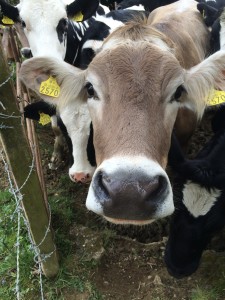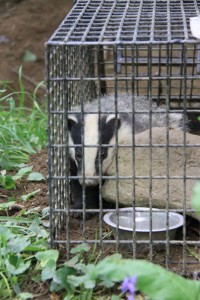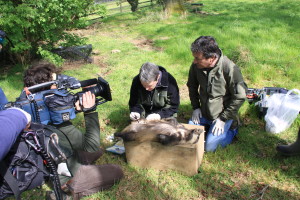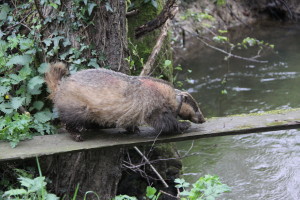Badgers are a very common mammal in Ireland, but few of us have actually seen one of these iconic creatures in the wild. That’s because they are nocturnal, mostly coming out of their setts only at night to forage, patrol their territories and meet the opposite sex.
They have found themselves at the centre of unwanted attention in the UK over the past few years as a result of controversial culls, which have been designed to reduce the threat of their spreading tuberculosis (TB, caused by Mycobacterium bovis) to cattle. In addition to criticism from animal welfare groups, the culls have received mixed support from the scientific community. Here at Trinity College we are using tracking technology to find out how best to implement a far happier solution.
We have teamed up with researchers from the Department of Agriculture Food and the Marine (DAFM) and the National Parks and Wildlife Service (NPWS) to use the latest technology to track badgers in Wicklow. We’ve put collars carrying satellite tracking devices on more than 60 badgers, which automatically pinpoints their location at least four times during the night. The study has been running for four years now, building up one of the largest data sets of badger movements ever collected.
But what is all this surveillance for? Why are we so keen to know where badgers go and who they meet?
Badgers carry TB, which they can transmit to other badgers and other wild or domestic animals including cattle. That’s a problem for the farmers who have to kill any cattle which get TB to protect the rest of us. But it’s not clear how exactly the disease transmission between badgers and cattle takes place – whether the badgers have to be very close to the cattle, or inside a building, or whether the cattle can catch it from badger bedding, faeces, or urine left in the pasture. This is one of the questions the badger tracking may help to answer.
We get detailed information on how often badgers enter farmyards, and have evidence that they actively avoid a field when cattle are grazing in it. In addition, we now know how far badgers move each night, where they go – and how that changes with the seasons – so we can work out how quickly the disease can spread.
Finally, this should help us to work out the best way to get a vaccine against TB into all the badgers in each social group. Badgers in Ireland have a dominant male and female living together with their cubs from the previous year, and just about now, cubs are born. We want to deliver the vaccine to the badgers in food, rather than having to inject it, which is obviously much easier for us and nicer for the badgers. However if you just put out a pile of baits then the dominant male will probably eat the lot, and the rest of the group will go unvaccinated. So knowing who goes where, and at what times of year, will also help us design a baiting system, which will give every badger a reasonable chance at getting some vaccine.
In essence, our badger surveillance is all in a good cause, and we hope it may help in the battle against TB both in cattle and in badgers.
The research project will feature on RTE’s Living The Wildlife with Colin Stafford-Johnson this Tuesday 31st of March at 7pm (https://www.youtube.com/watch?v=i4ZIIQ-Z-BY). Be sure to tune in to find out more about our work.
Author: Dr Nicola Marples
Research Team: Nicola Marples (TCD), Margaret Goode (DAFM), Teresa MacWhite (DAFM), Peter Maher (DAFM), Enda Mullen (NPWS), David Kelly (TCD), Aoibheann Gaughran (TCD).
Photo credits: Aoibheann Gaughran & Peter Maher






